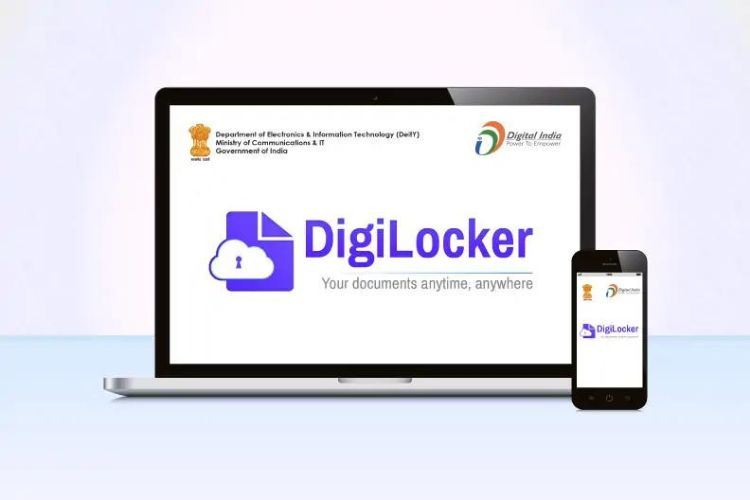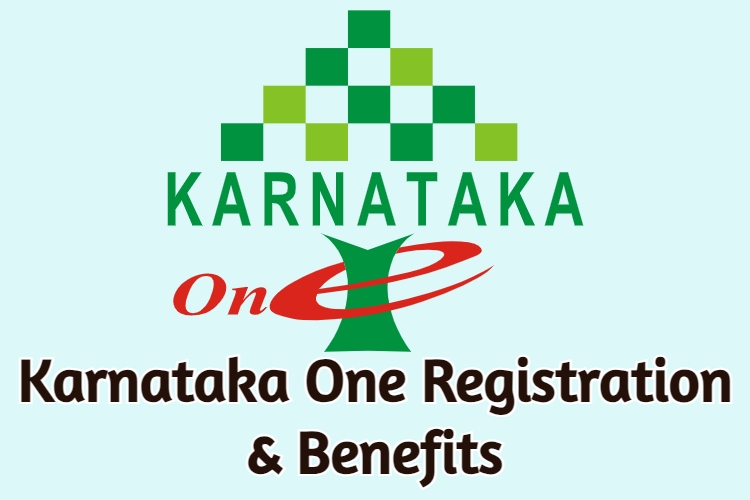The National Pension System (NPS) scheme is a pension scheme by the government of India. It’s like a savings plan for retirement where you put money in a pension account while you’re working. The Pension Fund Regulatory and Development Authority (PFRDA) and the Central Government make sure everything runs smoothly. It’s all about securing your future!
What is the National Pension Scheme/System?
The NPS scheme is a pension scheme for private sector employees who want a steady income after retirement. It’s flexible and can move with you to different jobs and places. Plus, you get tax benefits under Section 80C and Section 80CCD.
When you retire, you can take out some cash upfront and the rest will come to you as a monthly pension. It’s perfect if you want to start planning for retirement early without taking big risks. Anyone in the age range of 18-60 can join the NPS scheme.
What are the benefits of the National Pension Scheme(NPS)?
1. Returns/Interest:
One of the benefits of the NPS scheme is that a part of your investment goes into equities, which can give higher returns than traditional options like PPF. It’s perfect if you want to grow your funds over the long term and have a financially stable retirement. The NPS interest rate ranges from 9% to 12%, so it provides an opportunity for a stable future.
2. Tax Benefits:
One more advantage of NPS for the participants is the tax deduction benefit. The amount invested in the NPS scheme up to the maximum limit of Rs.1.5 lakhs can be claimed as a tax under Section 80C of the Income Tax Act. Also, in the National Pension Scheme, both the employer and the employee can enjoy the tax benefit for their contribution to NPS.
3. Premature Withdrawals:
If you choose the National Pension Scheme, you’ll need to contribute until you’re 60. After 3 years, you can make partial withdrawals, up to 25% of what you’ve contributed. In special cases like education, house purchase, or medical emergencies, you can make premature withdrawals. You can withdraw 3 times in total, with a gap of 5 years between each withdrawal. Remember, these rules only apply to Tier I accounts and not Tier II.
4. Equity Allocation:
With the NPS scheme, you can invest your money in various schemes. You can put up to 50% in equities, as per the equity allocation rule. There are two investment options: active choice and auto choice. Active choice lets you pick your funds and divide your money based on your risk and suitability. Auto choice invests for you based on your risk profile and age.
5. Risk Assessment:
The NPS scheme has a limit on how much equity exposure it can have, which varies from 50% to 75%. For government employees, the limit is 50%. The equity portion will decrease by 2.5% annually from the year when the investors reach 50 years of age. This ensures that the investors’ fund is less exposed to the fluctuations of the equity market.
6. Voluntary Nature:
In the NPS, you can decide when to contribute money in the given financial year and you can change the amount you want to invest every year too.
7. Flexible:
The National Pension Scheme lets subscribers decide how to invest and which pension fund to pick, and they can watch their investment increase.
8. Simplicity:
It is very simple to open an NPS account. You can visit the eNPS website or at any of the Point of Presence(POP) and get your NPS account opened.
9. Regulated:
The Pension Fund Regulatory and Development Authority of India (PFRDA) oversees the NPS scheme. NPS provides clear and trustworthy services to subscribers, as it follows strict investment rules and regular audits.
Eligibility for National Pension Scheme:
To join NPS scheme, you must meet the following eligibility criteria:
- You should be a citizen of India (resident or non-resident) or a Non-Resident Indian (NRI).
- You should be between 18 and 70 years old.
- You should follow the Know Your Customer (KYC) norms specified in the application form.
- You should have the legal capacity to enter into a contract as per the Indian Contract Act.
- Overseas Citizen of India (OCI), Persons of Indian Origin (PIOs) and Hindu Undivided Families (HUFs) cannot subscribe to NPS.
- NPS is a personal pension account, so it cannot be opened for someone else.
How to Apply for National Pension Scheme?
The NPS is governed by the PFRDA, which provides two ways to open this account: online and offline. The PFRDA oversees the functioning of the NPS and ensures its compliance with the rules and regulations.
Offline NPS Scheme Registration Process:
If you want to start an NPS account manually or offline, you need to locate a PoP – Point of Presence, which can be a bank that is authorised by the PFRDA. Get a subscriber form from the nearest PoP and fill it in with your KYC documents.
After you make the first investment (at least Rs.500 or Rs.250 monthly or Rs. 1,000 yearly), the PoP will give you a Permanent Retirement Account Number(PRAN).
You can use this number and the password in your sealed welcome kit to access your account. This process has a one-time registration fee of Rs.125.
Online NPS Scheme Registration Process:
You can create an NPS account in less than 30 minutes. The online process (enps.nsdl.com) is simple if you connect your account to your PAN, Aadhaar and mobile number.
You can confirm the registration using the OTP received on your mobile. This will produce a PRAN (Permanent Retirement Account Number), which you can use for NPS login.
- Visit the official ENPS website.
- Choose the type of subscriber you are from ‘corporate’ or ‘individual’.
- Choose the right residential status.
- Select the account type as tier-I or both tier-I and tier-II.
- Enter your PAN credentials and choose a suitable POP Bank.
- Click on registration and select the option to ‘register with Aadhar’
- Enter your Aadhar details and generate OTP.
- Enter your personal information with bank and nomination details and OTP.
- You will receive a PRAN(Permanent Retirement Allotment Number) after successful submission.
- After submitting the e-signature and photograph, you will be sent an OTP on the registered mobile number.
- Enter the OTP and make the payment.
- Once the payment is completed, you will receive your PRAN.
Types of NPS Account:
Primarily, there are 2 types of NPS accounts: tier-I and tier-II. The details are given in the below table:
| Particulars | NPS Tier-I Account | NPS Tier-II Account |
|---|---|---|
| Status | Default | Voluntary |
| Withdrawals | As per the given rules and regulations | Permitted |
| Tax Exemption | Up to Rs. 2 lakhs annually | 1.5 lakhs for Govt. employeesNo benefits for other sector employees |
| Minimum Amount to be paid for creating an account | Rs. 500 | Rs. 1000 |
| Minimum Amount to be paid in NPS | Rs .500 per month or Rs. 1000 annually | Rs. 250 |
| Maximum Amount to be paid in NPS | No limit | No limit |
The tier-I account is a mandatory account for every person enrolling for the NPS scheme. The Central Government employees have to pay 10% of their basic salary in the Scheme, for everyone else, this scheme is a voluntary investment.
What is the application fee for registering for the NPS schemes?
| Intermediary | Charge head | Service Charges* |
|---|---|---|
| CRA (Central Record-Keeping Agency) | Account Opening charges | Rs. 50 |
| Annual Maintenance cost per account | Rs. 190 | |
| Charge per transaction | Rs. 4 | |
| POP (Point-of-Presence) | Initial subscriber registration and contribution upload | Rs. 100 |
| Initial contribution upload | 0.25% of the initial contribution amount from subscriber subject to a minimum of Rs.20 and a maximum of Rs.25,000 |
NPS Interest Rate
The NPS scheme is a market-linked investment option that allows the subscribers to invest in 4 different asset classes such as equities, government securities, corporate bonds, and alternative assets through various pension funds. The NPS interest rate scheme is not fixed, but it varies according to the market performance of the funds as they are invested in market-linked securities. The contribution made by the subscribers towards the NPS scheme is subject to the returns generated by these pension funds based on the market fluctuations of the stocks and bonds.
What are the NPS Fund Managers?
A portfolio of investment (such as a mutual fund, pension fund, or insurance fund) has a set of objectives that guide its decisions. A fund manager is the person or organisation responsible for making those decisions according to the fund’s goals. Choosing a fund manager is a required step when opening an account.
The National Pension Scheme has seven fund managers who are authorised by the PFRDA to manage the money. These are the pension funds that are registered under the scheme.
- Pension Funds for people from Government Sector:
- LIC Pension Fund Ltd.
- UTI Retirement Solutions Ltd.
- SBI Pension Fund Pvt. Ltd.
- Pension funds apart from Government Sector:
- HDFC Pension Management Co. Ltd
- Tata Pension Management Ltd.
- Aditya Birla Sunlife Pension Management Ltd.
- Kotak Mahindra Pension Fund Ltd.
- ICICI Prudential Pension Fund Management Co. Ltd.
- Max Life Pension Fund Management Ltd.
- Axis Pension Fund Management Ltd.
How do I login after registration?
- If you have registered with eNPS already, you must have received a PRAN(Permanent Retirement Account Number)
- This PRAN acts as a user ID for logging into your NPS account.
- Go to the official site of NSDL CRA.
- Enter your PRAN, DOB, and new password and confirm the password.
- Solve the captcha and click on submit.
- This will generate an IPIN, which you can use to log in to the NSDL portal.
- Log in to the NSDL eNPS page and select the option ‘Login with PRAN/IPIN’.
- Use PRAN and IPIN to sign in to your eNPS.
National Pension Scheme Withdrawal Charges After Retirement:
After retirement (at 60 years), you can withdraw up to 60% of your NPS savings as a lump sum, tax-free. If your total corpus is less than or equal to Rs 5 lakh, you can take out the entire amount without an annuity plan. However, for larger amounts, only the first Rs 6 lakh is tax-free, and the rest requires an annuity. The annuity income is taxable based on your income bracket. Plan wisely to maximize your NPS benefits after retirement.
Frequently Asked Questions
1. How much is the monthly pension from NPS?
Ans: Your NPS pension amount will vary based on several criteria, such as the types of assets you chose, the length of your investment and how much you contributed.
2. What is the interest rate on NPS?
Ans: The return on the NPS is linked to the performance of the underlying assets. Therefore, the exact amount of income at the time of retirement is not fixed in advance. The interest rates range from 9% to 12%.
3. How many NPS accounts can I have?
Ans: You can have only one NPS account.
4. Can I transfer my NPS account?
Ans: Yes, as you are not allowed to have more than one NPS account, you have to transfer your NPS account to your new employer after you change.
5. Which is the best scheme in NPS?
- H0DFC Pension Management Company Limited.
- Aditya Birla Sun Life Pension Management Limited.
- SBI Pension Funds Private Limited.
- UTI Retirement Solutions Limited.
- Reliance Pension Fund.
- ICICI Prudential Pension Funds Management Company Limited.
- LIC Pension Fund.
6. When does the NPS mature?
Ans: The NPS scheme matures at the age of 60 and can be extended till the age of 70. However, you can prematurely withdraw a certain percentage of your contribution before the maturity period.









